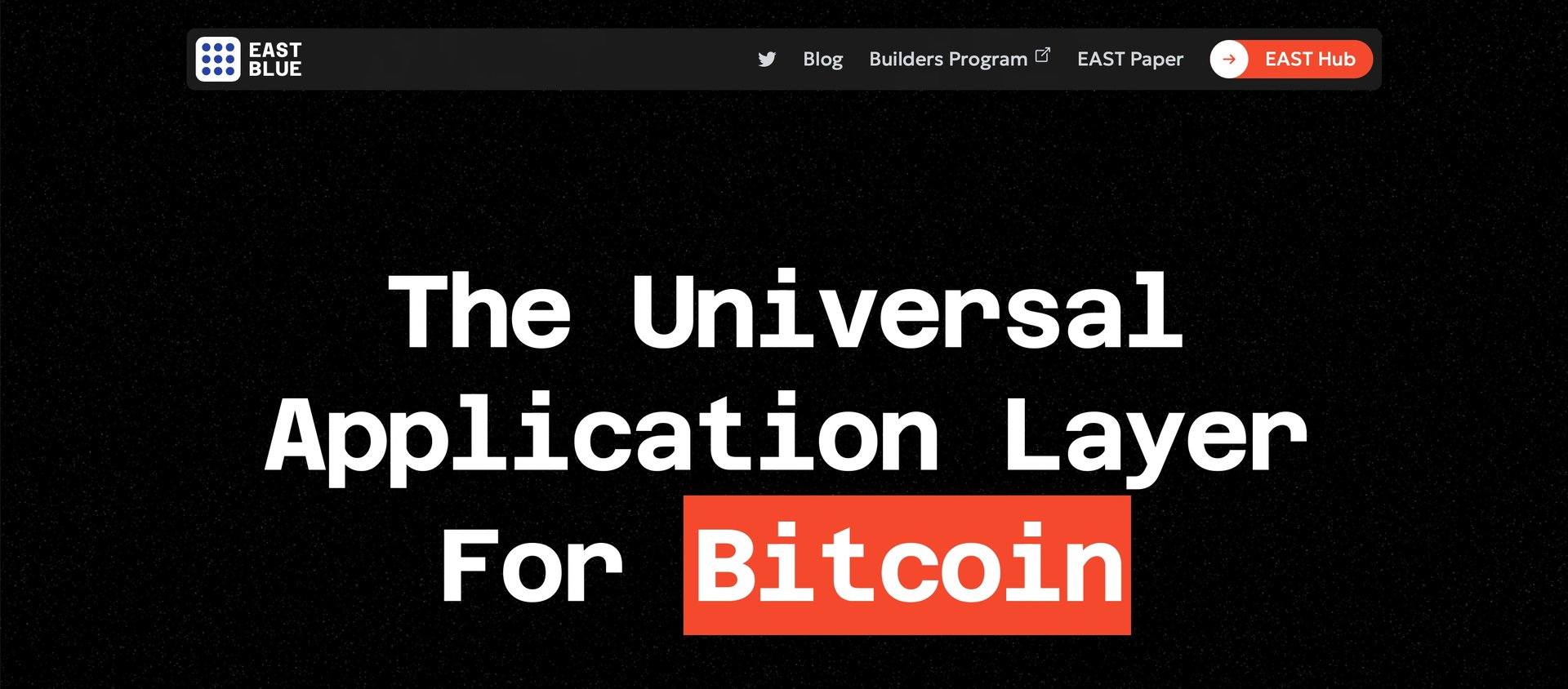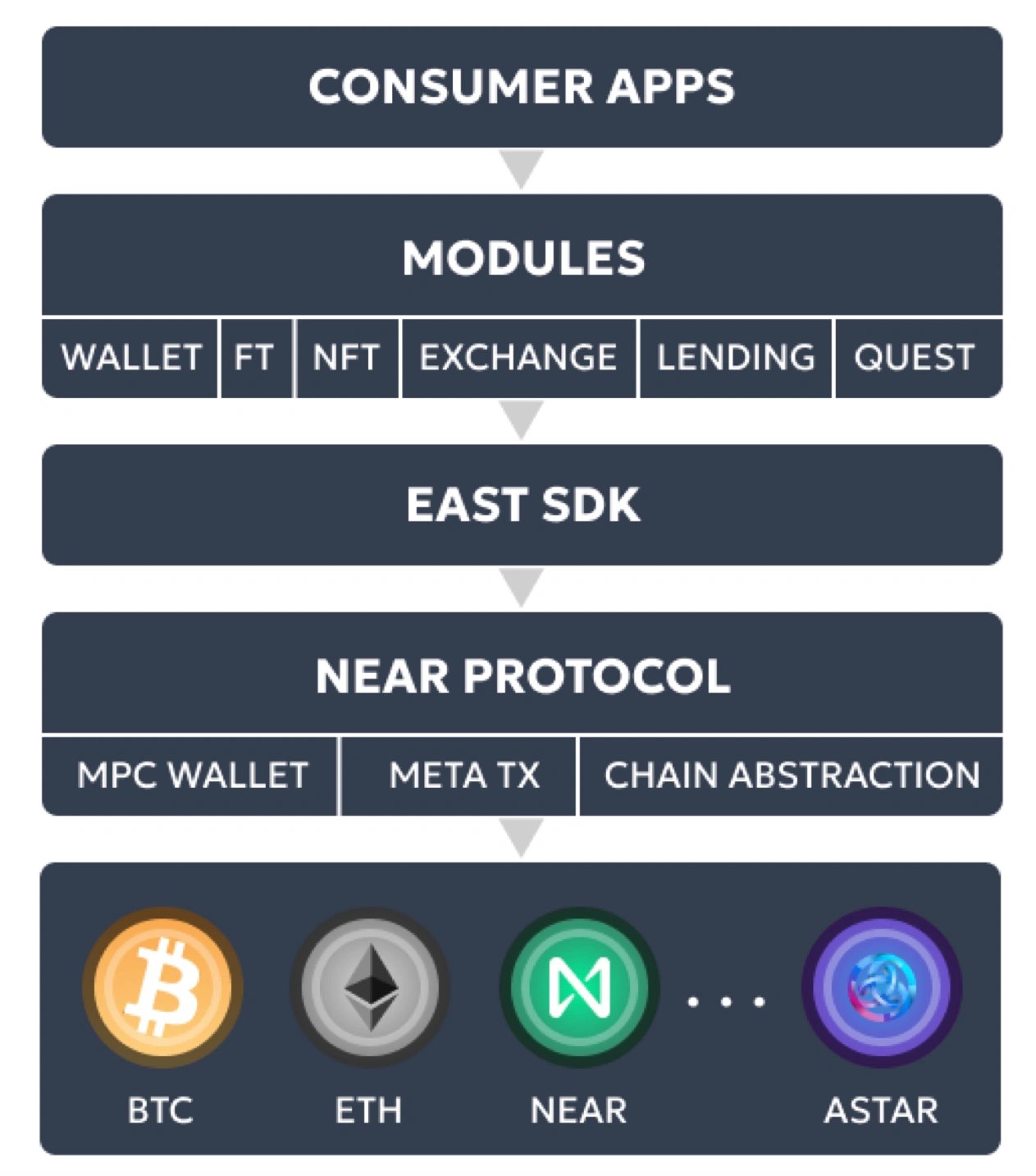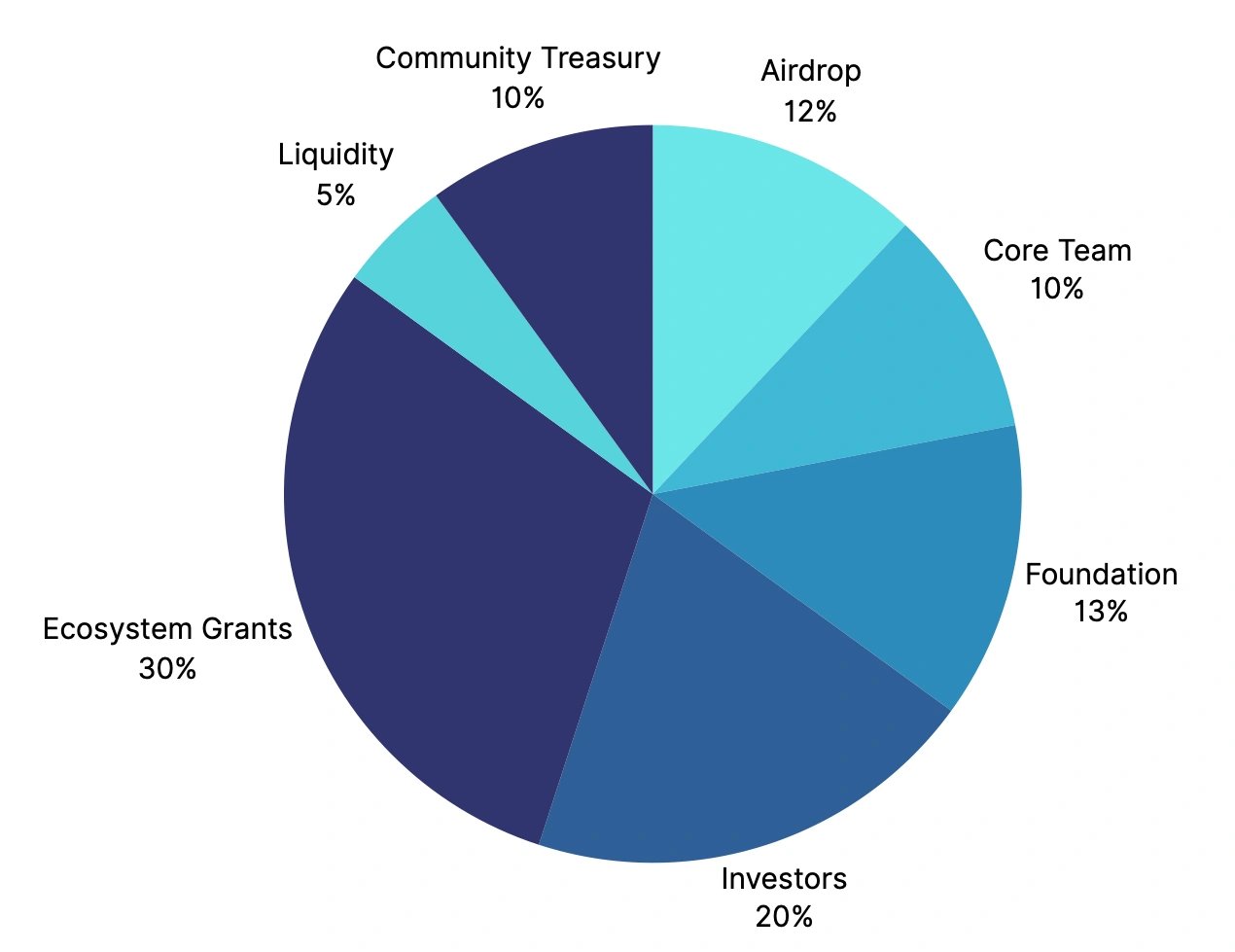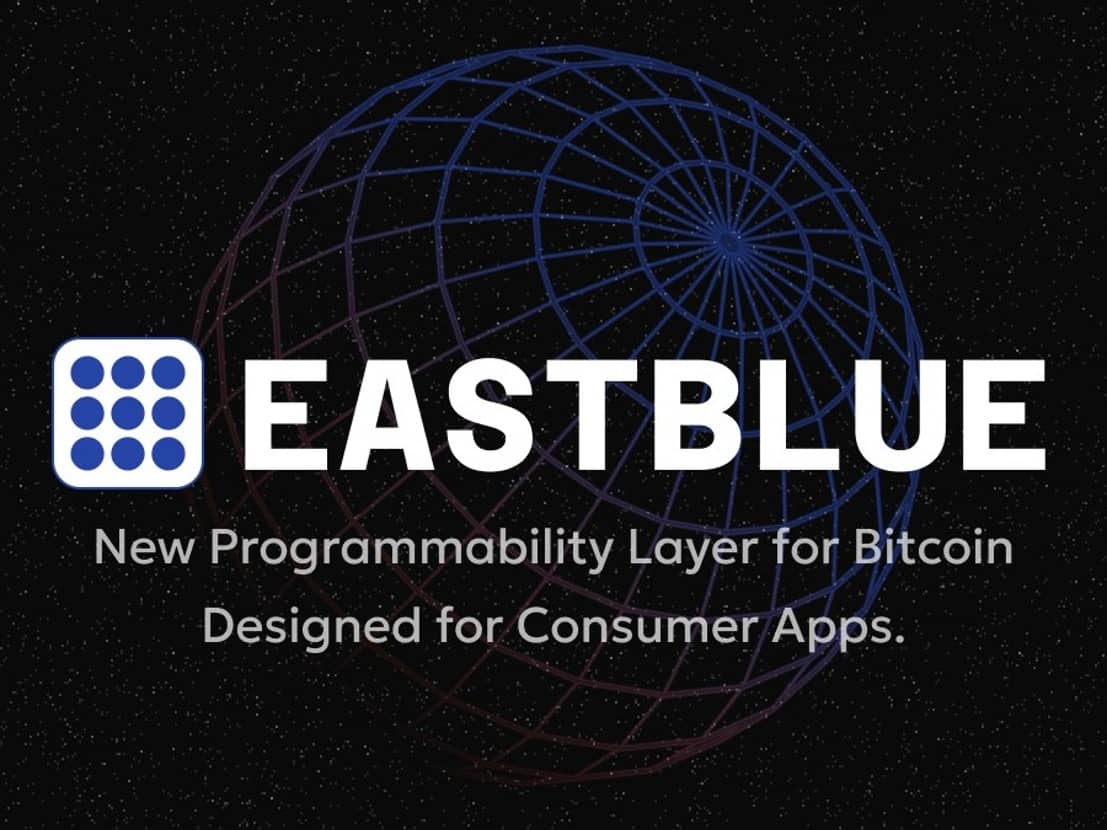Subscribe to wiki
Share wiki
Bookmark
EAST Blue
The Agent Tokenization Platform (ATP):Build autonomous agents with the Agent Development Kit (ADK)
EAST Blue
EAST Blue is a platform that introduces a new programmability layer aiming to enhance Bitcoin scalability for consumer applications and everyday transactions, leveraging NEAR Protocol to improve efficiency and accessibility.[1][2][3]

Overview
EAST Blue is a platform that introduces a new programmability layer tailored to scale Bitcoin for consumer applications and daily transactions. The platform aims to enhance the efficiency and accessibility of Bitcoin transactions, making them more cost-effective and faster for users. EAST Blue provides a multi-VM, multi-chain layer 2 solution for Bitcoin, leveraging NEAR Protocol's user-friendly blockchain infrastructure.
This approach seeks to improve the usability of Bitcoin while catering to the needs of both consumers and developers. Through these efforts, EAST Blue aims to facilitate the mainstream adoption of Bitcoin and create opportunities for innovation in the cryptocurrency sphere.[1][2][3][4][5]
Transaction Efficiency
It aims to reduce transaction costs and accelerate processing times on the Bitcoin network, with the goal of making transactions significantly more affordable and faster, potentially by a factor of 1000. This initiative targets the challenges posed by high fees and delayed confirmations, particularly during periods of network congestion.[1]
Interface
The platform prioritizes a user-friendly experience, aiming to simplify interactions with the Bitcoin ecosystem. By minimizing technical complexities commonly associated with blockchain technology, EAST Blue aims to empower users to seamlessly engage with Bitcoin, facilitating activities such as buying, selling, holding, and transacting. This approach aims to broaden access to Bitcoin among mainstream users.[1]
Economic Expansion
EAST Blue aims to expand Bitcoin's utility beyond its role as a store of value. By enabling practical use cases for Bitcoin, the platform aims to tap into the potential of a 1 trillion USD Bitcoin economy, facilitating a broader range of everyday transactions and financial activities.[1]
Blockchain Support
The platform aims to support various virtual machines (VMs) and blockchain networks, including WebAssembly (WASM)/Ethereum Virtual Machine (EVM) and Bitcoin Layer 1 (L1)/Layer 2 (L2) solutions. This is intended to enable EAST Blue to accommodate diverse applications and use cases, serving as a flexible layer that integrates decentralized applications (dApps), oracles, and Layer 2 solutions. Ultimately, this aims to enhance the interoperability and functionality of the Bitcoin ecosystem.[1]
EAST SDK
The EAST Software Development Kit (SDK) serves as a JavaScript package designed for web3 consumer app development, aiming to simplify interactions with blockchain infrastructure. It provides features for authentication, identification, and transaction relaying, allowing developers to focus on product development. Notably, the SDK seeks to streamline user authentication, manage gas fees, and facilitate various operations like asset transfers and swaps across multiple blockchains.[2][6]

EAST Account Vault Model
The EAST Account Vault Model (AVM) is designed as a decentralized, bridgeless, and non-custodial solution to address scalability challenges in the Bitcoin network. Leveraging NEAR Protocol, the AVM utilizes the Account Vault Model to transfer account ownership to smart contracts, facilitating cross-chain transactions. By adopting NEAR's account model and account aggregation, accounts are transformed into Account Vaults, enabling the management of assets like BTC or Ordinals within smart contracts.
This approach aims to enable various applications, such as NFT marketplaces trading Account Vaults, or BRC-20 launchpads launching tokens as real BRC-20 assets on Bitcoin. Additionally, BTC can be transferred to the NEAR blockchain, allowing for trading on DApps and interaction with other assets.[7]
Tokenomics
EAST Blue Token ($EAST)
The $EAST token serves as the primary medium of exchange within the EAST Ecosystem, facilitating transactions and payments. Additionally, it enables governance participation for token holders and may be used as incentives or rewards for community contributions.[2][8][9]
Utility
- Medium of Transactions: The $EAST token serves as a medium for value exchange and grants access to exclusive features within the EAST Ecosystem, aiming to enhance user experience and network functionality.
- Governance: Token holders are invited to participate in decision-making processes regarding the community treasury and ecosystem development, fostering a transparent and democratic governance model.
- Staking: By staking $EAST tokens, users contribute to ecosystem stability, potentially earn rewards, and gain increased influence in governance decisions, aligning with the ecosystem's principles of participation and community empowerment.[2][10][11][12]
Allocation
The token allocation for EAST Blue comprises 1 billion $EAST tokens with dynamic emission based on ecosystem performance, alongside a 5-year lockup period. Tokens are distributed as follows:
- Airdrop: 12% with no specified cliff and a 12-month lockup period.
- Ecosystem Grants: 30% with no specified cliff and a 5-year lockup period.
- Community Treasury: 10% until governance is online, with no specified lockup.
- Liquidity: 5% with no specified cliff or lockup.
- Investors: 20% with a 6-month cliff and a 3-year lockup period.
- Foundation: 13% with a 6-month cliff and a 5-year lockup period.
- Core Team: 10% with a 12-month cliff and a 5-year lockup period.
These allocations follow a cliff and monthly linear vesting plan. While a significant portion of tokens for community and ecosystem development is available immediately, the remainder is subject to various cliff periods to ensure alignment of interests between developers, investors, and ecosystem growth.[2][13]

Airdrop
The $EAST Ecosystem originated from the PARAS Community, a utility token for the Paras Ecosystem, known for its prominent role in NEAR’s NFT Ecosystem. While the PARAS token's focus is primarily on NFTs and has limited utility, the airdrop of $EAST tokens to $PARAS holders aims to integrate the existing PARAS community into a broader ecosystem. This involves a 12-month airdrop campaign distributing up to 10 million $EAST tokens monthly through methods prioritizing PARAS token holders.[2][14]
Dynamic Emission
The $EAST Token employs dynamic emission, adjusting based on ecosystem usage and performance. New tokens are minted at each epoch, with the quantity determined by transaction volume. 60% of minted tokens go to the Community Treasury, and 40% to Staking Rewards. This system aims to maintain economic balance, adapting to market conditions while incentivizing network participants.[2][15]
See something wrong?
The Agent Tokenization Platform (ATP):Build autonomous agents with the Agent Development Kit (ADK)
